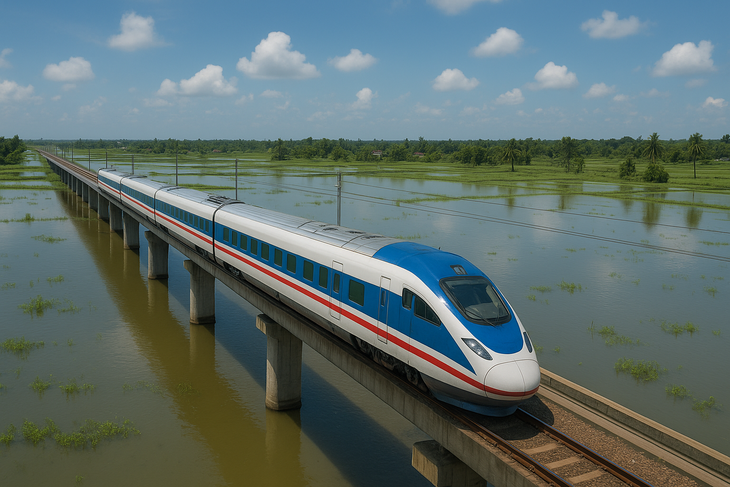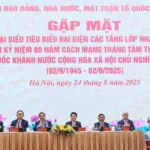When discussing the development dreams of the Mekong Delta, people often mention the rivers, the bridges, or the expressways extending towards the sea.
But if one had to choose a project of sufficient scale to create a structural change, I believe it would be the Ho Chi Minh City – Can Tho railway line.
It is not merely a transportation route, but a lifeline connecting the two most dynamic economic centers in the South, while also opening opportunities to restructure the development space for the entire region.
Rebalancing the Development Space
For decades, transportation in the Southern region has almost entirely depended on roads and waterways.
These two methods were once suitable for agricultural development conditions, but as the economy shifts to industry and services, and supply chains demand speed and stability, the narrow roads and crowded rivers are no longer capable of bearing the burden.
Railways, with their large, stable, and safe transport capacity, can help reduce millions of tons of goods transported by road, cut logistics costs, and simultaneously create a completely new development axis between Ho Chi Minh City and the Western South region.
Looking further, this railway line is also a tool to rebalance the national development space.
Currently, Ho Chi Minh City is under excessive pressure regarding population, infrastructure, and environment, while many localities in the West remain fragmented and lack momentum to attract investment.
When infrastructure connections are opened, flows of capital, labor, knowledge, and technology can circulate more easily, forming satellite urban clusters, industrial zones, and logistics centers along the route. This is a positive spillover effect, a way to develop harmoniously instead of bloating disproportionately.
Solving the Problems of Capital and Feasibility
However, talking about railways means talking about the problems of capital and feasibility – the two biggest hurdles. With a scale of hundreds of trillions of dong, we cannot rely solely on the state budget. A flexible, transparent, and feasible public-private partnership model is needed.
The state must play a leading role: investing in the core infrastructure, ensuring site clearance and social safety; while domestic and foreign private enterprises participate in exploitation, operation, services, and logistics.
To achieve this, policy mechanisms must be clear, stable, and have long-term commitment. No investor dares to take risks if they do not see confidence in policy consistency.
Simultaneously, the cash flow problem must be carefully calculated. We cannot build a railway line with the expectation that “if you build it, they will come.” Prudent forecasts of passenger volume, freight volume, ticket prices, operating costs, and maintenance are needed.
More importantly, there must be mechanisms to ensure minimum revenue, or risk-sharing policies between the State and private sector, so that the project does not fall into the situation of “grand start, poor finish” like many previous large infrastructure projects.
A feasible direction is phased investment: the first phase implements a single track with average speed, both to test the operational model and reduce capital pressure; later, when traffic volume increases, upgrade to double track and high speed.
The most difficult part is site clearance. The project is expected to affect over 10,000 households, stretching across many localities, each with its own regulations and methods. Without a special mechanism and sufficient political determination, just land negotiation alone could drag on for many years.
Experience shows that the most important things are transparency and consensus: people must clearly understand the project’s benefits, be ensured stable resettlement, and participate in monitoring the implementation process. When people believe, any project can be accomplished.
The Ho Chi Minh City – Can Tho railway is not just a technical problem, but a test of governance capacity, development vision, and policy courage.
It is a symbol of renewed thinking: not just thinking about concrete roads, but thinking about the future of a region, where tens of millions of people are waiting for more equal and sustainable development opportunities.
If we consider this railway line as a century project for the South, with a spirit of daring to act and taking responsibility, it will not only connect two urban areas but also connect the trust, aspirations, and vitality of






